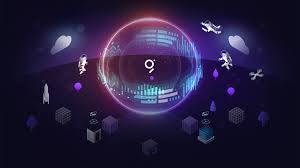Querying Data from Multiple Subgraphs in a Single GraphQL Query
 Pandit Dhamdhere
Pandit Dhamdhere
In the rapidly evolving world of decentralized finance (DeFi) and blockchain applications, the ability to aggregate data from multiple subgraphs in a single GraphQL query is a powerful tool for developers. This capability not only enhances the efficiency of data retrieval but also opens up new possibilities for creating comprehensive, cross-chain applications. In this article we will explore how to leverage The Graph's graph-client to query data from multiple subgraphs in a single query, providing developers with a seamless way to access and integrate data from different blockchain networks. LET'S DIVE IN
The Power of Cross-Chain Subgraph Handling
The Graph's graph-client offers unique features, including the ability to query from multiple subgraphs in a single query. This cross-chain subgraph handling is particularly useful for developers looking to build applications that span across different blockchain networks, such as Ethereum, Polygon, and others. By aggregating data from various subgraphs, developers can create more robust and feature-rich applications that leverage the strengths of each network.
Getting Started with graph-client
To begin using graph-client, you first need to install The Graph Client CLI in your project. This can be done using either Yarn or npm:
yarn add -D @graphprotocol/client-cli
or with npm
npm install --save-dev @graphprotocol/client-cli
Once installed, you can define your query in a .graphql file or inline it in your .js or .ts file. For example, to fetch data from both the Compound and Uniswap subgraphs, your query might look like this...
query ExampleQuery {
# this one is coming from compound-v2
markets(first: 7) {
borrowRate
cash
collateralFactor
}
# this one is coming from uniswap-v2
pair(id: "0x00004ee988665cdda9a1080d5792cecd16dc1220") {
id
token0 {
id
symbol
name
}
token1 {
id
symbol
name
}
}
}
This query demonstrates how to fetch market data from the Compound subgraph and token pair information from the Uniswap subgraph in a single query.
Configuring Your GraphQL Endpoints
To execute your query, you need to create a configuration file named .graphclientrc.yml and specify the GraphQL endpoints provided by The Graph. This file will point to the subgraphs you wish to query, allowing graph-client to fetch data from multiple sources in a single request.
Benefits of Cross-Chain Subgraph Handling
Efficiency : By aggregating data from multiple subgraphs, developers can reduce the number of requests needed to fetch comprehensive data, improving the performance of their applications.
Flexibility : Cross-chain subgraph handling allows developers to leverage the unique features and data of different blockchain networks, enabling the creation of more versatile and powerful applications.
Scalability : As the DeFi ecosystem continues to grow, the ability to query data from multiple subgraphs in a single query will become increasingly important. This capability ensures that applications can scale with the ecosystem, accommodating new networks and data sources as they emerge.
Conclusion
The ability to query data from multiple subgraphs in a single GraphQL query is a powerful feature that sets The Graph apart in the decentralized data ecosystem. By leveraging
graph-client, developers can build more efficient, flexible, and scalable applications that span across multiple blockchain networks. As the DeFi landscape continues to evolve, the importance of cross-chain data aggregation will only grow, makinggraph-clientan invaluable tool for developers looking to harness the full potential of decentralized finance.
Subscribe to my newsletter
Read articles from Pandit Dhamdhere directly inside your inbox. Subscribe to the newsletter, and don't miss out.
Written by

Pandit Dhamdhere
Pandit Dhamdhere
01101101 01100001 01100100 01100101